Seven iconic Karl Lagerfeld moments
His was one of the most iconic faces in fashion, and this year the designer – who died in 2019 – is the theme of the Met Gala in New York. His personal style – the uniform dark suits, matching shades and the ponytail – made Karl Lagerfeld instantly recognisable, and he was also known for his occasionally provocative comments.
But how is the German designer being remembered? He didn’t so much have a distinctive look or design as an impact that hit home. Today, fashion shows arguably have grown larger than the collections they showcase – and none of these shows were bigger than Lagerfeld’s spectacles at the Grand Palais in Paris.
More like this:
– The rise of minimalist dressing
– Why the super-rich love understated dressing
– Karl Lagerfeld: Behind the mask
“Nothing ‘defined his style’ because he was a chameleon who changed his colours according to the house for which he was designing,” Valerie Steele, director and chief curator of the Museum at the Fashion Institute of Technology, tells BBC Culture. “As he said once, he was Miss Chanel, Miss Fendi, Miss Chloé, (even, perhaps, Miss Lagerfeld) – with different styles for each.”
Lagerfeld worked for multiple fashion houses over the years, and at the time of his death at the age of 85, he was the creative director of both Chanel and Fendi, and also ran his own label.
His career began in the 1950s, when, alongside another great, Yves Saint Laurent, he won a prestigious fashion award now known as the International Woolmark Prize. He soon became the assistant to one of the judges that year, Pierre Balmain, and his rise through the Paris fashion world continued with a series of legendary French brands, including the now defunct fashion arm of Jean Patou and Chloé.
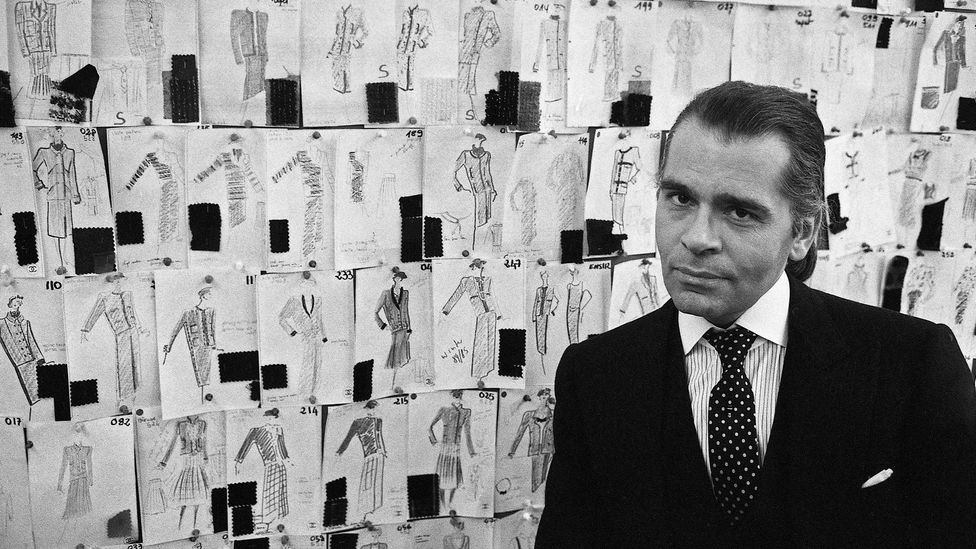
Karl Lagerfeld in 1984, a year after he had joined Chanel, where he remained for nearly 40 years (Credit: Getty)
Lagerfeld reached his peak serving as the creative director of Chanel – a role he continued for 36 years. Taking the reins just over a decade after the death of founder and namesake Coco Chanel, he revived the fading brand by introducing ready-to-wear and combining a nod to the house’s tweedy, sporty, women-in-trousers heritage, adding modern and even futuristic touches.
But in the words of The New York Times fashion director and chief fashion critic Vanessa Friedman, it was not for creating his own silhouette – unlike some of his contemporaries.
“He was variously referred to as a ‘genius’ the ‘Kaiser’ and ‘overrated'”, she wrote. “His contribution to fashion was not in creating a new silhouette, as designers like Cristobal Balenciaga, Christian Dior and Coco Chanel herself did. Rather, he created a new kind of designer: the shape-shifter. That is to say, the creative force who lands at the top of a heritage brand and reinvents it by identifying its sartorial semiology and then wresting it into the present with a healthy dose of disrespect and a dollop of pop culture.”
Here are some of Karl Lagerfeld’s iconic fashion moments.
Karl and Yves
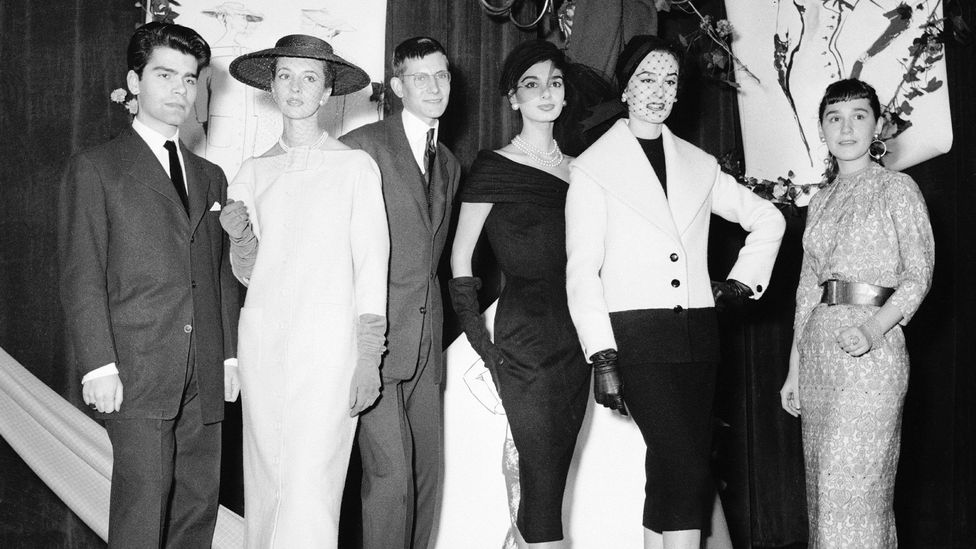
Karl and Yves (Credit: Getty)
Unknown at that time, Karl Lagerfeld in 1954 launched his fashion career proper by winning a prestigious fashion prize organised by the International Wool Secretary. It got him his first job assisting judge and designer Pierre Balmain, and it also made him a great new friend, fellow winner, Yves Saint Laurent.
“Without Yves Saint Laurent and Karl Lagerfeld, the world of fashion is less colourful, seductive, inventive and, yes, brash and naughty. What a loss,” mutual friend of both designers Madison Cox tells BBC Culture.
Skirting controversy
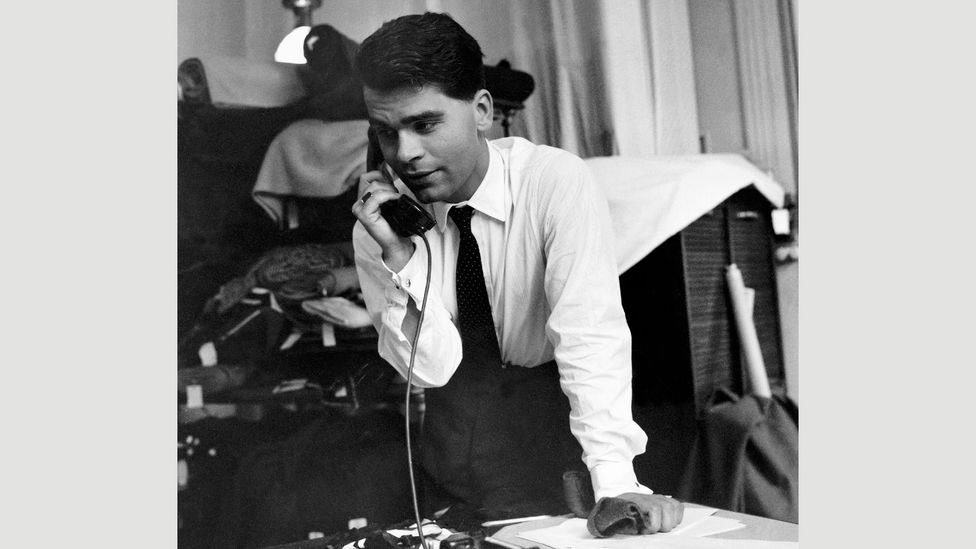
Skirting controversy (Credit: Getty)
Mary Quant may have become famous for creating the mini skirt, but Karl Lagerfeld (shown here in 1960), caused controversy by creating the shortest skirts of the season for his then employer, the French brand Jean Patou. His early collections may have courted attention, but they were not always well received. His first collection for the brand Curiel in 1969 was described by one critic as having “drippy, drapey elegance.”
Adult entertainment
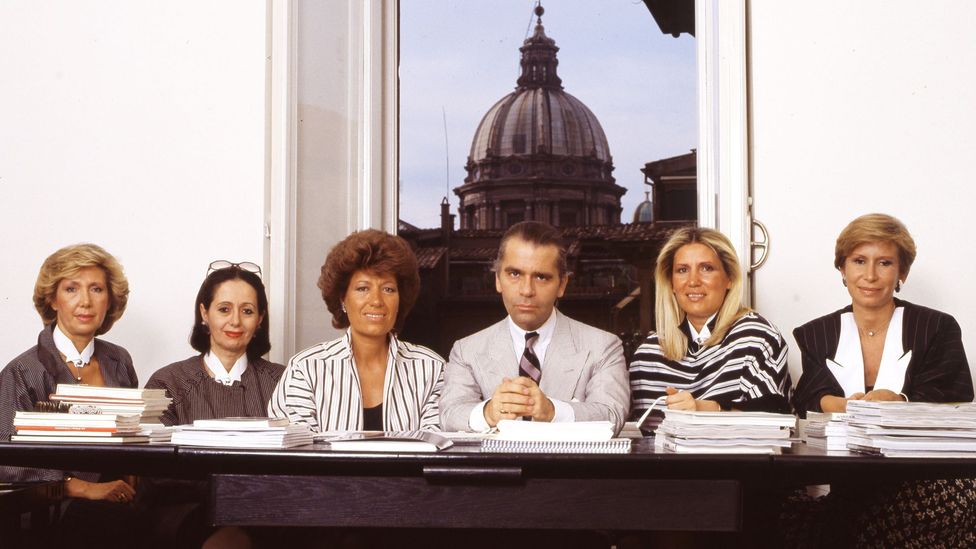
Karl Lagerfeld in 1993, surrounded by the five Fendi sisters, heads of the Italian luxury fashion house (Credit: Getty)
More controversy, when Lagerfeld’s Spring collection for Fendi in 1993 used an Italian adult entertainment star to model his black-and-white collections. American Vogue Editor Anna Wintour walked out of the Milan show when Moana Pozzi appeared as a model. The pair subsequently reconciled, and Wintour later presented Lagerfeld with the Neiman Marcus Award for Distinguished Service in the Field of Fashion. She called him “a kind, loyal and constant friend”.
Little black jacket
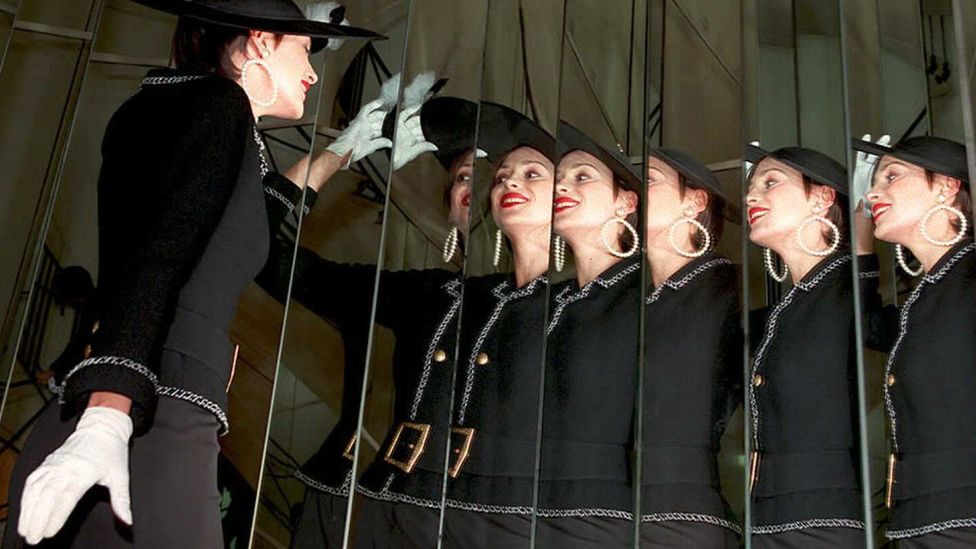
Little black jacket (Credit: Getty)
An entire book has been written on the re-designing and styling Chanel’s iconic black jacket. And Lagerfeld’s reworking of the jacket will be one of the revamps he will remain best known for during his time at the label. In the book, The Little Black Jacket, Lagerfeld and French fashion editor Carine Roitfeld joined forces to present 21 photographs of celebrities, styled by Roitfeld, wearing the legendary garment.
Wedding with a twist
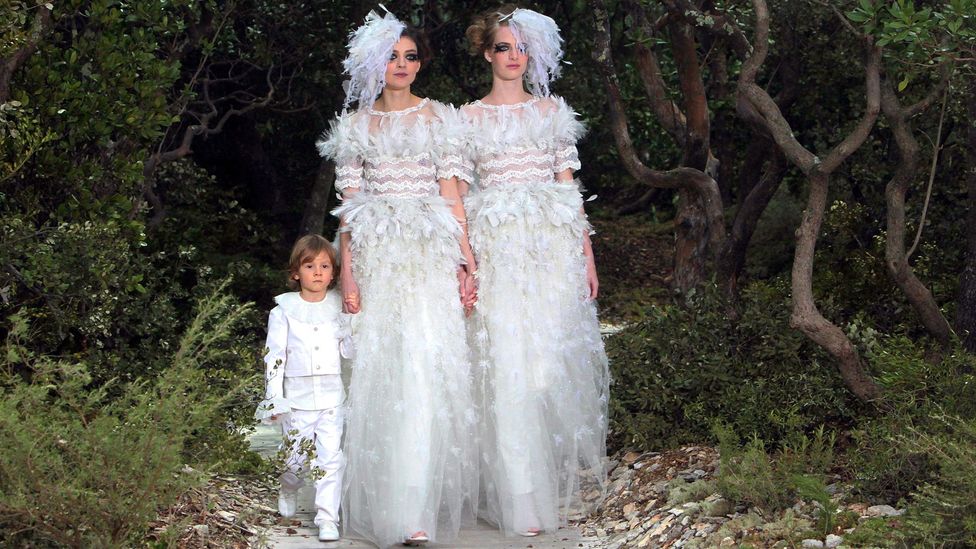
Wedding with a twist (Credit: Getty)
In January 2013, Lagerfeld closed his traditional haute couture show with the customary wedding dress, but worn by two women holding hands to show his support of same sex marriage, specifically referencing a controversial French marriage law that had led protesters to take to the streets of Paris. Lagerfeld’s “wedding-with-a-twist” theme for the couture show was set inside a forest of trees planted inside the Grand Palais.
Supermarket chic
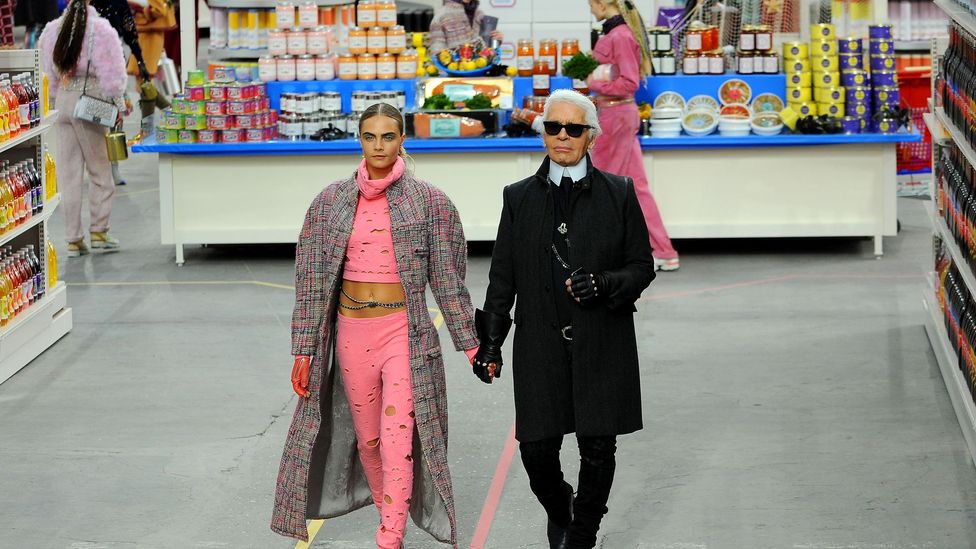
Supermarket chic (Credit: Getty)
Lagerfeld was known for creating epic fashion shows inside the Grand Palais for Paris Fashion Week. One of the most memorable in recent memory was the Womenswear Autumn/Winter 2014-2015 catwalk, when he turned the Grand Palais into a Chanel-themed supermarket. It was his way of making luxury seem more compatible with everyday life.
Fashion as protest
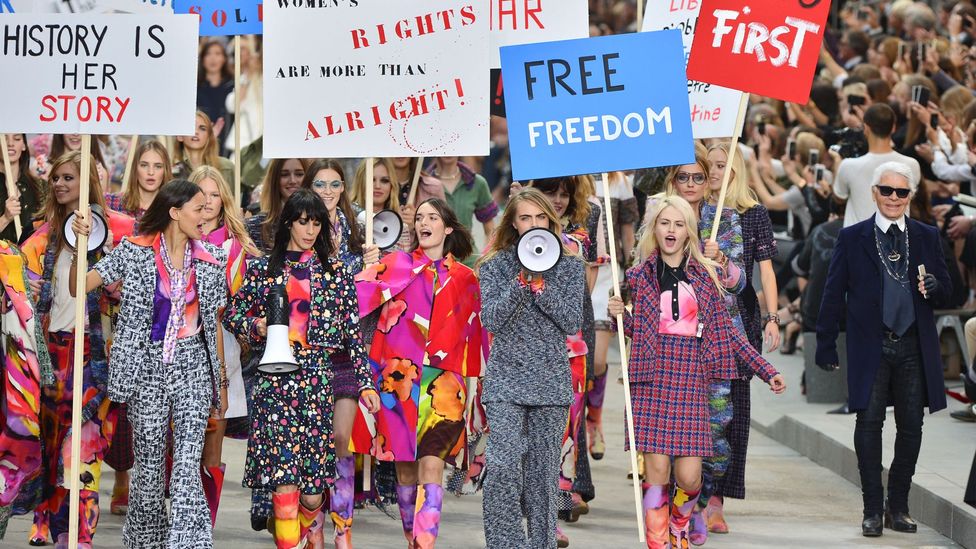
Fashion as protest (Credit: Getty)
Lagerfeld often embraced the zeitgeist with his collections. His Spring/Summer 2015 womenswear show reflected on feminism and protest, with models marching through the Grand Palais bearing placards. Their slogans included “History is Her Story” and “Ladies First”.
A version of this article first appeared on BBC Culture in February 2019.
If you would like to comment on this story or anything else you have seen on BBC Culture, head over to our Facebook page or message us on Twitter.
And if you liked this story, sign up for the weekly bbc.com features newsletter, called “If You Only Read 6 Things This Week”. A handpicked selection of stories from BBC Future, Culture, Capital and Travel, delivered to your inbox every Friday.








